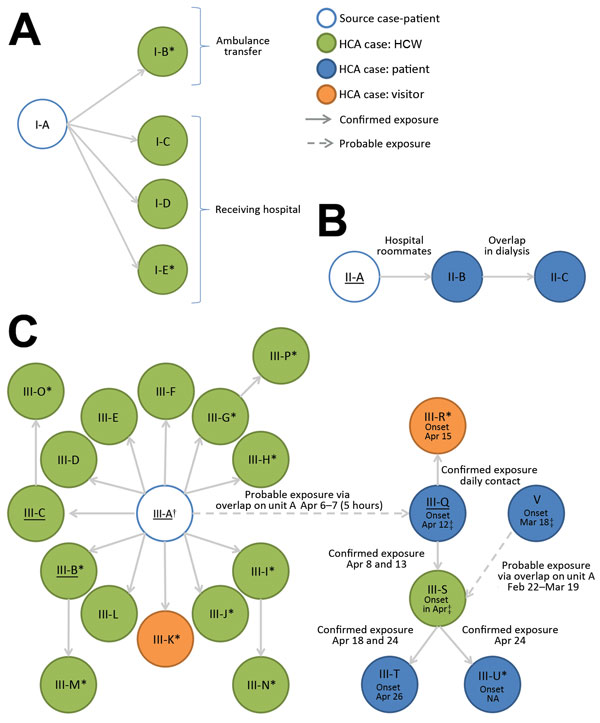Volume 22, Number 4—April 2016
Research
Transmission of Middle East Respiratory Syndrome Coronavirus Infections in Healthcare Settings, Abu Dhabi
Figure 1

Figure 1. Transmission of Middle East respiratory syndrome coronavirus (MERS-CoV) infections in 3 healthcare setting clusters, Abu Dhabi, January 2013–May 2014. A) Cluster I; B) cluster II; C) cluster III. Individual patients are identified by cluster and a letter indicating the order in which cases occurred (e.g., I-A indicates the source case-patient for cluster I). Figure panels illustrate suspected chains of transmission of MERS-CoV infection within the 3 clusters. Each circle represents a case-patient. Arrows connect case-patients with likely source of MERS-CoV infection, with arrows pointing in the direction of transmission (i.e., from source case-patient to secondary case-patient). Descriptions adjacent to arrows indicate the timing or location of confirmed (shown with solid arrows) and probable (shown with broken arrows) exposures between the case-patients. Asterisks (*) indicate case-patients who reported no fever or symptoms of respiratory disease; underlining indicates cases for which isolates underwent genetic sequencing. †Dates of exposure and symptom onset for case-patients III-B–III-L are summarized in Figure 2. ‡After identification of MERS-CoV in case-patient V, healthcare workers in unit A were screened beginning March 24, 2014. MERS-CoV was not detected from a sputum specimen collected from case-patient III-S at this time. The MERS-CoV–positive specimen was collected on April 24, after identification of case-patient III-Q on the same ward. HCA, healthcare-associated; HCW, healthcare worker.